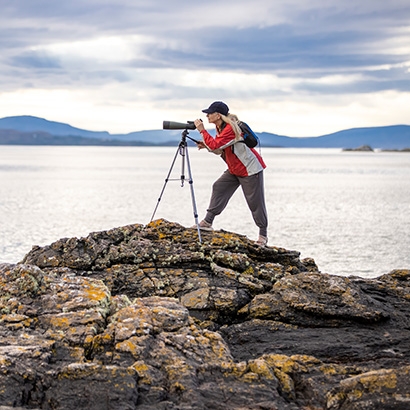What can we learn about work, career and success from a Renaissance master who lived 500 years ago? Quite a lot, as it turns out…
Inspiration can come from surprising places. For the 39 Morgan Stanley employees who recently trained to be guides for guests of the firm at The Metropolitan Museum of Art exhibition Michelangelo: Divine Draftsman and Designer, sponsored by Morgan Stanley, learning about the life and works of the Renaissance master offered more than a few lessons about the art of achievement.
Here are 9 insights that they shared:
1. Every detail matters, even the ones that people don’t see.
One of the striking things about Michelangelo’s Studies for the Libyan Sibyl is how carefully he articulated all of the back muscles on the figure, all the way down to the seat, even though in the final fresco on the Sistine Chapel’s ceiling, most of the sibyl’s back is covered by her robe. In Michelangelo’s drawings in particular, we see the extraordinary attention to detail, to seeing his subjects from all kinds of angles, even though he only needed the one.
2. Leave your comfort zone.
Michelangelo always saw himself as a sculptor. It was the medium that he loved best, and he left his mark early in his career, with masterpieces like the David and La Pieta. But when Pope Julius II asked him to paint the Sistine Chapel ceiling, he accepted, even though he had very little experience with frescoes at that point, especially given the scale and difficulty of that project. He ended up bringing a radical sensibility and created a masterpiece. Many of us get caught up in thinking of ourselves in rigid ways, defined roles and skills, when leaving our comfort zones can sometimes help bring out our best.
3. Vision may be singular, but success takes teamwork.
Michelangelo exhibited precocious talent at a young age, but this unsociable genius understood that success is neither instantaneous nor solitary. What often seemed simple in concept was difficult in execution: Michelangelo began with scores of sketches and built small-scale models to work toward the finished product; he collaborated with quarriers to select marble for his sculptures, and he employed assistants to complete his monumental frescoes.
4. Sometimes, you need to take a break to recharge.
The Drunkenness of Noah and The Great Flood were the first paintings on the ceiling of the Sistine Chapel, and they are notable for their number of complex large figures. Nevertheless, the most iconic panels of the Sistine ceiling, including The Creation of Adam, were produced after Michelangelo took a year off in 1510. On his return to work, he pared his narratives down to the dramatic figures and dynamic vision for which he is best known today.
5. Embrace competition… it can spur greatness.
The Renaissance boasted immense artistic productivity—and competition. Michelangelo was fueled by his rivalry with Leonardo da Vinci, the younger Raphael and the even younger Titian, and vice-versa.
6. Enter into a labor of love.
While many of Michelangelo’s most famous works came as commissions from patrons such as Lorenzo di Medici and Pope Julius II, he also created a series of “presentation drawings” as gifts for some of his closest friends. Unlike his rougher sketches, works such as The Fall of Phaeton show Michelangelo bringing the full power of design and sculptural vision to these intimate and exquisitely finished works on paper, considered among the finest in the Western tradition.
7. To transform the familiar into the extraordinary, present it in a new angle.
The creative process is vast: borrow, scrutinize, develop and redevelop…. Even when the subject matter was something tried and true, the ever-singular Michelangelo chose an unconventional narrative. His greatest achievements were moments of anticipation rather than the more typically depicted heat of action. In The Battle of Cascina, he elected to capture the unguarded moment when Florentine soldiers stopped to cool off in the Arno River before a Pisan attack. In The Crucifixion of St. Peter, he depicted the scene before Roman soldiers raised Peter on the cross, a compositional device that permitted him to display his extraordinary display of human anatomy.
8. If it doesn’t exist, invent it.
Many of Michelangelo’s most monumental works required more than artistry—they called for an inventive mind with an intuitive grasp of engineering and physics. To fresco the Sistine Chapel ceiling, Michelangelo designed a novel scaffolding structure that stunned some of his most expert contemporaries. To get the best marble at the huge dimensions he needed, Michelangelo engineered and oversaw the building of new roads from quarries.
9. Curate your brand ruthlessly.
Michelangelo had a relatively long and productive career—apprenticed at 13 and living to the ripe old age of 88. He made hundreds of sketches and drawings throughout his life in preparation for various sculptures, frescoes, buildings, and other commissions. Yet, not much remains of that body of work. That’s because several times during his career, he burned the bulk of his sketches and designs. It’s still unclear why he did this, but the 133 of his remaining drawings displayed in The Met’s exhibition are vivid evidence of his towering reputation.



